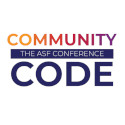The Workflow State Machine
Syntax
A workflow description is called a workflow schema . It is a guarded automaton:
W = ( S , T , E , C , A , V , s0 )
with
-
S is a set of states
-
E is a set of events
-
C is a set of conditions
-
A is a set of actions
-
V is a set of boolean variables
-
Ass is a set of assignments: Ass subseteq V x {true, false}
-
T is a set of transitions: T subseteq E x S --> S x CS x AS
-
with
-
CS subseteq C
-
AS = {(A1, ..., An)} for Ai in A union Ass and n in N0
-
-
s0 in S is the initial state
Semantics
A workflow instance is defined as follows:
I = ( W , s , i )
with
-
a workflow schema W = ( S , T , E , C , A , V , s0 )
-
a current state s in S
-
a variable instantiation i : V --> {true, false}
Be I = ( W , s , i ) a workflow instance. The successor of I for the event e is
(a) the workflow instance I ' = ( W , s ', i ') with
-
there is a t in T with
-
t = ( e , s , s ', cs , as )
-
all c in cs are complied
-
-
i '(v) = b for all v with (v, b) in as
-
i '(v) = i (v) for all other v
(b) I , if such a t does not exist.
Invoking a Transition
When an event e is invoked on a workflow instance I, the following algorithm is executed:
- The current state scurrent is determined.
- The transition t from scurrent to snext which has the event e is determined.
- If t is not exactly defined, an exception is thrown.
- All conditions of t are validated.
- If all conditions are complied, the transition t fires:
- All assignments of t are executed.
- The workflow instance I is advanced to the state snext .


